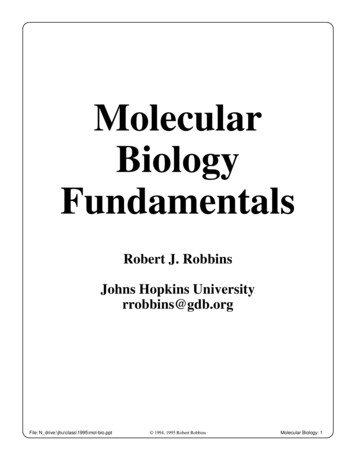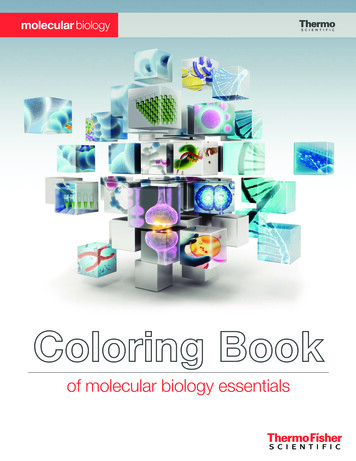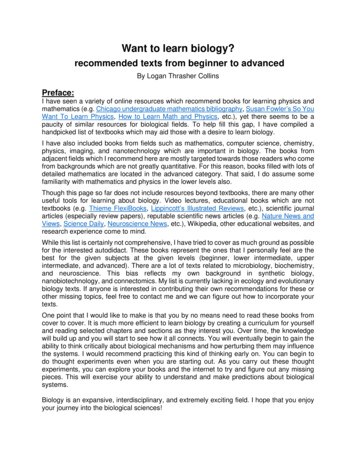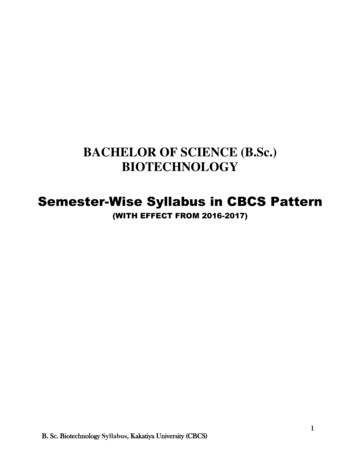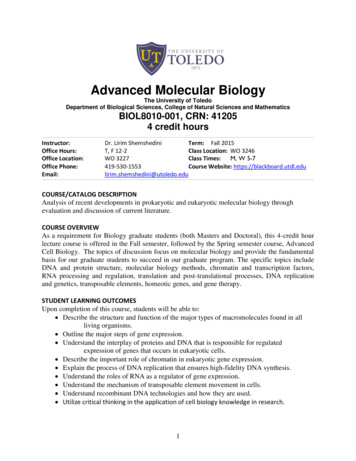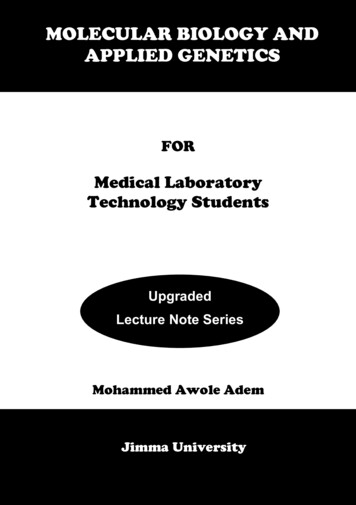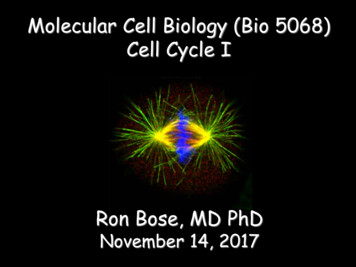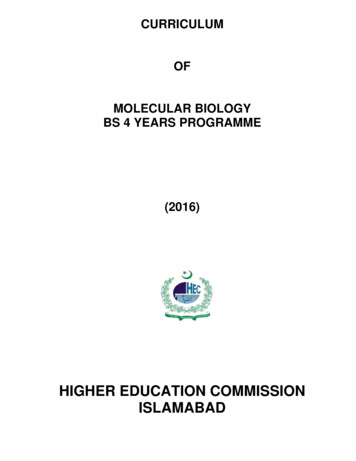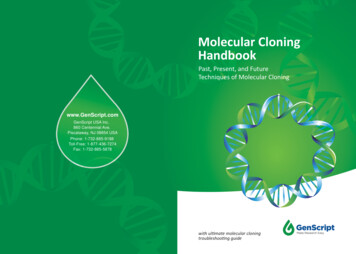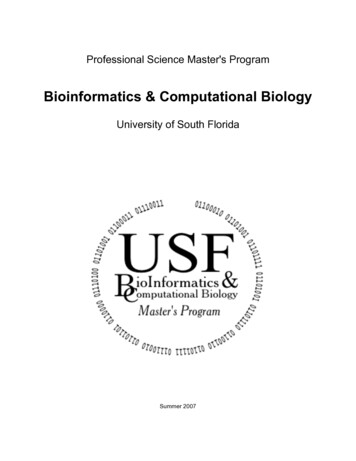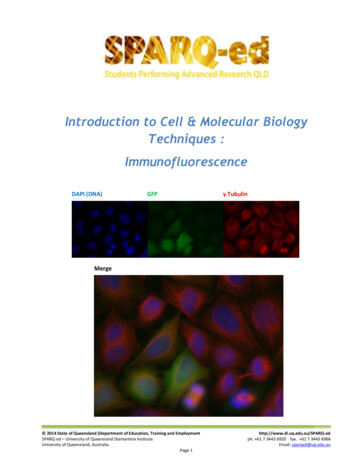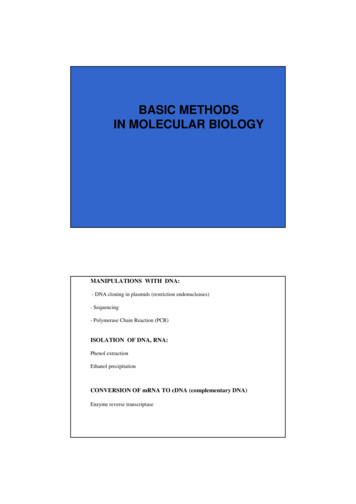
Transcription
BASIC METHODSIN MOLECULAR BIOLOGYMANIPULATIONS WITH DNA:- DNA cloning in plasmids (restriction endonucleases)- Sequencing- Polymerase Chain Reaction (PCR)ISOLATION OF DNA, RNA:Phenol extractionEthanol precipitationCONVERSION OF mRNA TO cDNA (complementary DNA)Enzyme reverse transcriptase
10 base pairs(3.4 nm)DNA can be easily:- isolated as a pure nucleic acid, free of proteins and RNA- cleaved at specific sites with restriction enzymes and recombined- sequencedTypes of DNA:- genomic (nuclear): high molecular weight DNA ( 100 kb long)- cDNA (copy of messenger RNA)linear (genomic DNA, DNA of some DNA viruses, cleaved circular DNA) or circular (plasmids,E.Coli chromosome, )DNA double strand:5 . T C G C G C T A A A C T C C C T .3 upper strand, the same sequence as in mRNA3 . A G C G C G A T T T G A G G G A .5 when these strands are separated, they have different nucleotide compositionand can be separated (e.g. by electrophoresis)or5 . T C G C G C T A A A C T C C C T .3 (the complementary strand is usually not shown)in RNA: 5 . U C G C G C U A A A C U C C C U .3
DNARNAsSTRUCTURE:2 -deoxyribose- thymine- double helix, higher orderstructures in the nucleusribose- uracil- single strand witha secondary structureFUNCTION:- storage of geneticinformation- role in the expression ofgenetic informationBasic processes in which they participate:- replication,- transcription, translationtranscription (ssDNA as template)- nucleus,(mitochondria)Localization in the cell:- nucleus, cytoplasm,(mitochondria)Formation of hybrids:DNA x DNADNA x RNARNA x RNAIsolation of pure nucleic acids – DNA and/or RNACell extract Disintegration of cellular compartments sodium dodecylsulphate PROTEIN DENATURATION phenol/chloroform PHASE SEPARATION DNA and RNA in the water phase Ethanol precipitation (both DNA and RNA precipitate in the presenceof higher salt concentration and 70% final conc.of ethanol)The method works in a range of nucleic acid concentrations andmolecular weight.
Q: Can RNA also form a duplex?Q: What is the difference in the stability ofpure DNA and RNA
CLONING OF DNA INSERTS INTO PLASMIDSPlasmid: circular DNA, replicates autonomously in bacteria,requires origin of replication and resistance to anantibioticInsert:any fragment of ds DNAEnds of plasmid backgroud and insert are important:Must be compatible (sticky) or blunt
Detection of nucleic acids:Hybridization,“probing”,Types of probes, labeling of probes
Radioactive phosphates in NTP/dNTPPolymerase chain reaction (PCR)( “cloning” without bacteria, in the test tube)Use: DNA diagnostics, forensic medicine,research
CELL CULTURE METHODS
ImunofluorescenceDAPI
FLOW CYTOMETRYFACS (Fluorescence Activated Cell Sorting):Forward Scatter (FSc) particle sizeSide (Orthogonal) Scatter (SSc) Cell surface, granularityFluorescent Labeling- emitted light
Analýza fází buň. cyklu pomocí průtokové cytometrie350300 nm457 488 514400 nm500 nmCommon Laser Lines610 632600 nm700 nmPE-TR Conj.Texas RedPIEthidiumPEFITCcis-Parinaric acid J.Paul Robinson - Purdue University Cytometry LaboratoriesSlide 12 t:/classes/BMS524/524lect3.ppt
IN MOLECULAR BIOLOGY MANIPULATIONS WITH DNA: - DNA cloning in plasmids (restriction endonucleases) - Sequencing - Polymerase Chain Reaction (PCR) ISOLATION OF DNA, RNA: Phenol extraction Ethanol precipitation CONVERSION OF mRNA
